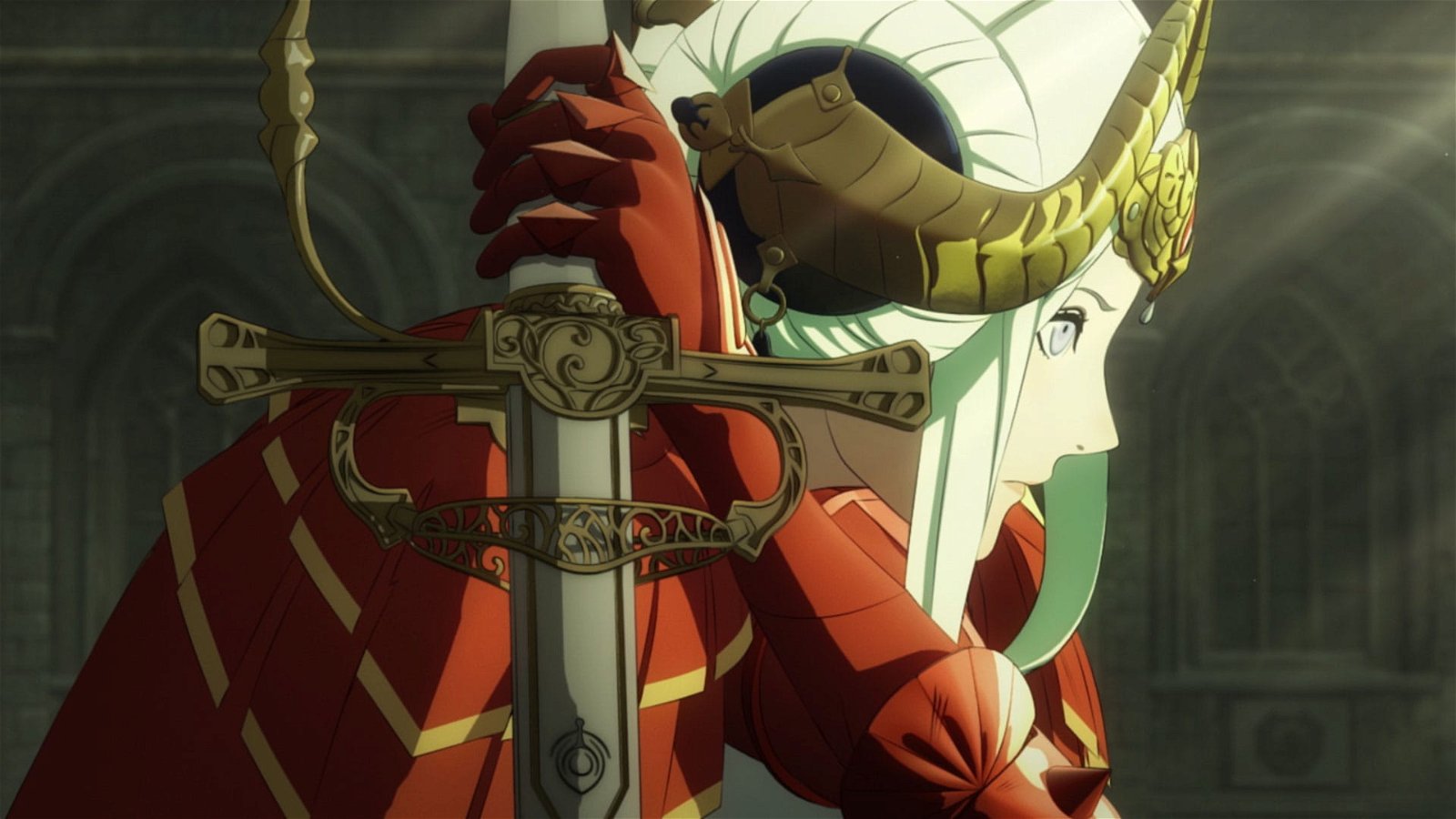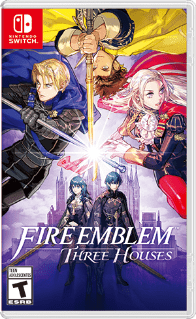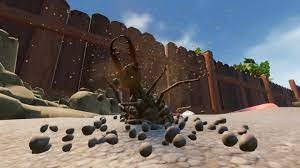The way I see it, Fire Emblem games fall into two distinct camps: those pre-Awakening and those post-Awakening.
The 3DS smash hit catapulted the series into stardom, particularly within its traditionally underserved English-speaking market, but it also had the effect of standardizing Awakening‘s once-novel relationship-building mechanics for nearly every entry in the series thereafter. (A notable exception is Fire Emblem Echoes: Shadows of Valentia, a remake of 1992’s Japan-only Fire Emblem Gaiden, which received a modern visual overhaul but retained much of its original gameplay structure. I loved Echoes.)
Early Fire Emblem games featured comparatively compact war campaigns with subdued characterization; more recent entries emphasize player choice in how to utilize, develop, and romantically pair the many expressive characters that make up each game’s ever-expanding roster of playable heroes. Smitten as I am with relationship-building elements in RPGs, I scarcely need to begin weighing the appeal of these disparate styles to know that my allegiance lies with the Fire Emblem titles of yesteryear. It was with some trepidation, then, that I approached Fire Emblem: Three Houses, the latest entry in the series and one poised to continue expanding its immediate predecessors’ trend-chasing tendencies. Three Houses is better than I expected in some respects and exactly as I predicted in others; it’s an enormous game that grants the player impressive control in directing its story and (mechanical) character development through allying with one of three distinct factions, but its sheer breadth comes at the cost of design finesse and balanced writing.
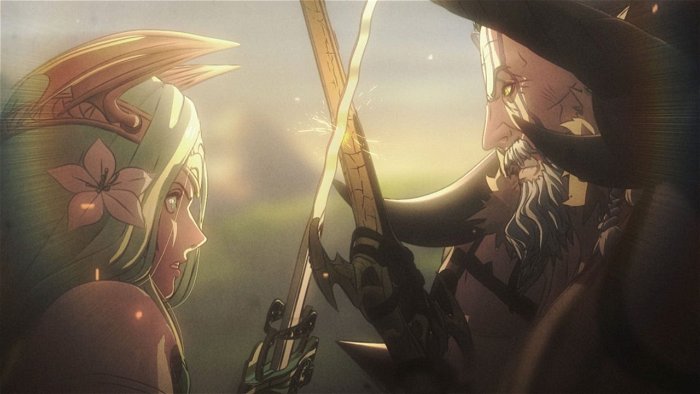
Three Houses sees the player assuming the role of a new professor at Garreg Mach Monastery, a military academy that lies geographically and politically at the center of three nations that enjoy an era of uneasy peace. Tasked with overseeing the education of cadets from all over the continent of Fódlan, the player does everything from lecturing these students (developing their martial abilities) to engaging in training exercises (mock battles) and more. Naturally, a Fire Emblem game would end rather abruptly in the absence of conflict, so these idyllic days eventually come to an end, ushering in a period of war that puts everything Garreg Mach’s students have learned to the test.
Much of the excitement in playing Three Houses lies in discovering how the story unfolds based on who the player chooses to ally with. The inciting incident for the war remains the same, but subsequent events shift dramatically depending on which House the player favours. True to Fire Emblem‘s modern stylistic direction, there also exists a wealth of optional characterization within “Support” conversations between character pairs. Support conversations in Fire Emblem tend to be optional fluff that has little to do with building the world around the characters in question; however, I would actually argue that many of Three Houses‘ Support conversations are more nuanced than those in Awakening or Fates. They take into account the political and ideological discrepancies that arise when people from different walks of life cohabitate, and they frequently impart interesting lore regarding Fódlan’s history, as well as its noble ancestry and the classism born from it. For once, I actually sought these out instead of beelining through the main story, which is typically what I’m interested in when I play Fire Emblem.
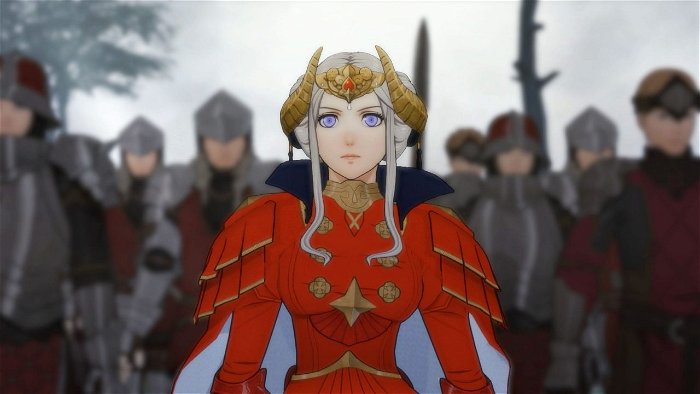
NOTE: The below paragraphs contain what could be considered mild story spoilers for the Blue Lions route, though critical details are omitted.
What grieves me about Three Houses is that for all its intriguing narrative hooks and permutations, the moment-to-moment writing is often incapable of keeping up. At times I saw glimmers of finesse in the way some characters are written, while I found others to be devastatingly dull, awkward, or bereft of comprehensible motivation. Twists are telegraphed with such clumsiness that I felt insulted by their predictability. A church as a central governing authority that dispatches knights to slaughter people who disavow their faith might be morally bankrupt? You don’t say. Characters who conveniently disappear and then return with completely different personalities could turn out to be evil? It couldn’t be! An army that doesn’t vet its recruits whatsoever might end up with a backstabber within its ranks? Groundbreaking. If Three Houses expects players to share its characters’ surprise and outrage when they finally develop the slightest awareness of their circumstances, it needs to consider the plotting of its story beats a lot more carefully.
I also found the three-faction system to be transparently manipulative in the way it encourages the player to interact with other houses’ students before turning them against you in the game’s second half. The sense of betrayal inherent to this act doesn’t feel earned due to thin characterization and breakneck pacing within the core narrative. It is as if the story was written as an outline and then characters were inserted into it later, making their behaviour implausible—or at the very least, contrived in service of narrative convenience. For a game that is predicated upon forming meaningful relationships with your characters, this is a misstep.
Speaking to other critics who have played Three Houses, I learned that backing the Blue Lion house as I did was probably the worst choice possible for enriching my understanding of the game’s overall plot. I found Dmitri’s story to lack nuance and awareness of the true conflict happening behind the scenes, possibly because several key characters completely disappear from the story at the onset of act two and are never heard from again. His path and ending ultimately made me feel like I was playing the truncated “law” route of a Shin Megami Tensei game—an experience I did not relish, though one can only account so much for personal taste. In short, it feels like the first half of Three Houses is setting up a specific story—one that centers around Edelgard, if I’m being honest—and deviating from that path, even unknowingly, is a surefire recipe for unfulfilled expectations.
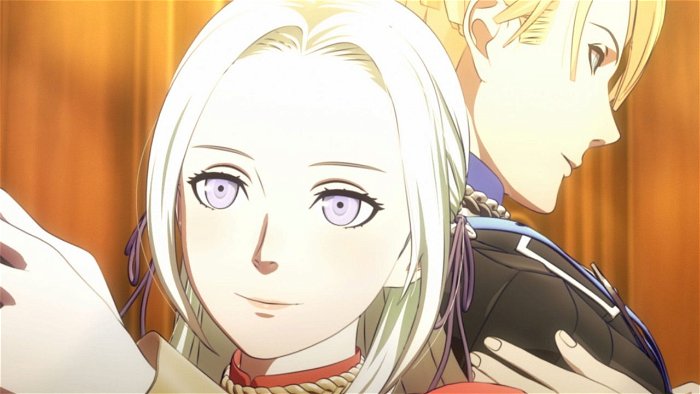
A brief but important note for those interested in exploring same-sex romance options: I played as a male protagonist and chose to pursue Alois, one of three male characters with a potential S-rank Support level. At a critical juncture near the end of the game, I was given the opportunity to give a ring to him as a symbol of my love (and the game does indeed use the word “love”), cementing what I thought would be a romantic relationship. I am disappointed to report that the game explicitly writes around this prospect, going so far as to establish a strict sibling-esque relationship and stating that the player went on to wed someone else during the game’s pre-credit sequence. A dearth of romantic options would have been frustrating; a bait-and-switch denial of time invested in what I thought was a potential relationship is worse.
But the story is only one half of the experience. Most of Three Houses’ gameplay revisions are actually off the battlefield. The bulk of the player’s time outside of combat is spent choosing students to tutor in the martial abilities of their choosing. Each student has a natural aptitude for certain skills, as well as a unique inherent ability, but otherwise, they are freely customizable. Changing a character’s class is as simple as raising particular stats and taking a corresponding exam (read: spending one of Fire Emblem‘s classic”Seals”). This means that the devout Mercedes could end up as a rampaging Wyvern Rider, or the snooty Lorenz could become a wound-tending Bishop. Most of the available options are straightforward fare that evolve in linear fashion; all are sufficient from a strategic standpoint, but I did miss the inclusion of funkier classes like the Butler or Dancer from Fates. As has been the case with other recent Fire Emblem titles, I find that this emphasis on customization comes at the expense of unit identity, but many players will undoubtedly enjoy being able to develop their characters as they see fit.
Once they take to the field, players will find that Three Houses’ most major alterations to combat are the removal of both the rock-paper-scissors “weapon triangle” and the character pairing functionality present in Awakening and Fates. This leaves each unit more responsible for their own welfare through intelligent utilization of the abilities they develop as they become more proficient in their areas of expertise. Some of these abilities include skills that impart effects not unlike the weapon triangle of past Fire Emblem games, such as the lance skill “Knightkneeler” that does bonus damage to mounted cavalry. White magic and black magic are unlocked by developing the Faith and Reason skills, respectively, and the number of charges available for each spell refills after every battle. Units can also hire “battalions,” each of which comes with stat bonuses and an ability that can turn the tide of battle, especially against large monster units that can otherwise counterattack at will.

In terms of mission structure, Three Houses features a satisfying variety of maps and objectives that also vary in difficulty and complexity. I found late-game maps to be especially punishing—I played on Normal difficulty with permadeath toggled on—thanks to enemy catapults and magic turrets, endless reinforcements, and damage-soaking monstrosities that stopped my army’s advance cold. There is no shortage of challenges for Fire Emblem diehards to test their strategic might against in Three Houses, and with DLC on the way, the game will be expanding plenty in the coming year. I admit that the difficulty level of Three Houses teeters on frustrating for me, but it generally feels fair enough that I’m comfortable taking responsibility for my own poor strategic decisions in the event of an untimely death.
Detail-oriented as I am, I couldn’t help but bristle at a variety of design decisions that detracted from my Three Houses experience. For one, the player spends half of the game traversing Garreg Mach Monastery, yet fast travel within it is clumsy, thanks to a map that is fussy about how it receives directional input. Character models are visually unimpressive and have an eerily uniform quality that stems from a lack of body diversity—and I mean that literally, as in there are only a handful of actual body models that simply swap out heads, making characters feel less unique. This is somewhat alleviated in the game’s second act thanks to a timeskip that ages the cast, but that timeskip also does nothing to the game’s core gameplay loop despite a huge shift in tone, which I found absolutely baffling. Similarly strange is the lack of explanation for a vital resource called “Renown.” I accumulated this by completing side quests over the first ten hours of my playtime before I even learned what it was: a currency to spend on permanent upgrades to lecture efficiency, experience point multipliers, and other quality-of-life bonuses. These made a significant difference in how I chose to develop my characters, so it seems strange that Three Houses doesn’t put more of a spotlight on it.

To be honest, even I struggle to understand my relationship with Fire Emblem. I love strategy RPGs, but something about this series continues to elude me, try as I might to immerse myself in it. There’s a push-and-pull of things I like and things I don’t that make it hard for me to evaluate Three Houses. Its cinematics are a treat, but there’s a lack of visual polish elsewhere, and the drab in-engine colour palette cheapens the overall look. The soundtrack is one of the best in recent memory for this series, particularly the catchy main motif that’s woven into other tunes throughout, but uneven voice acting (aside from the well-cast house leaders’) yanks me right out of the experience. I’m even at odds with the core gameplay loop, which hooked me immediately but gave diminishing returns the further I got into the story due to slower stat growth and an unshakable sense of ludonarrative dissonance.
There is much to explore in Fire Emblem: Three Houses, to be sure. But for all its emphasis on player choice, I could never shake the feeling that I chose wrong due to the way my story played out. “Reach for my hand,” the voice croons, but her grip is slick.
